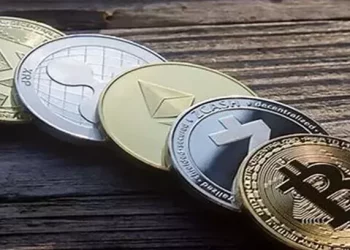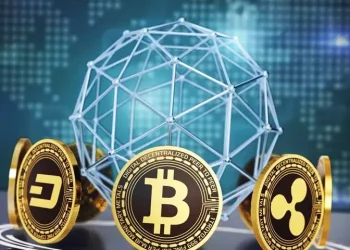A crypto swap is the process of exchanging one cryptocurrency for another. This transaction typically takes place on decentralized platforms or swap exchanges, allowing users to trade digital assets directly without the need for a centralized exchange. Token swaps have become a popular method for cryptocurrency enthusiasts to adjust their portfolios, participate in decentralized finance (DeFi), and avoid additional fees or Know Your Customer (KYC) requirements.
Swapping tokens can occur either on the same blockchain or across different blockchains, a feature offered by most decentralized exchanges (DEXs). This flexibility enables users to quickly adapt to market conditions and engage in various DeFi activities like lending or borrowing.
Types of Token Swaps
There are two primary types of crypto swaps: on-chain and off-chain.
On-chain swaps: These transactions occur on the blockchain and are executed via smart contracts. They ensure transparency and decentralization, allowing users to retain full control over their funds. Common platforms for on-chain swaps include Uniswap and PancakeSwap.
Off-chain swaps: Conducted by centralized exchanges, off-chain swaps involve transferring assets within the exchange’s internal database. While they tend to offer faster transactions with lower fees, users must trust the exchange with their assets during the swap process.
Both types of swaps have their advantages, with on-chain swaps offering decentralization and transparency, and off-chain swaps providing speed and efficiency.
Common Use Cases for Crypto Swaps
Crypto swaps have several practical uses within the crypto ecosystem, particularly for users involved in DeFi. Some of the main applications include:
Portfolio diversification: Swapping tokens allows users to adjust their holdings and spread investments across various assets without leaving the cryptocurrency market.
Yield farming: Users can exchange tokens necessary for participating in DeFi activities like staking and yield farming.
Accessing decentralized applications (dApps): Some dApps require specific tokens for participation, and swaps offer an easy way to acquire these tokens.
How Do Crypto Swaps Work?
Crypto swaps function differently based on whether they are on-chain or off-chain.
On-chain swaps: In an on-chain swap, a smart contract locks the user’s original token in escrow and facilitates the exchange to the desired token. These transactions are decentralized and trustless, allowing for peer-to-peer exchanges without intermediaries. Users provide liquidity to liquidity pools, which creates a marketplace for token swapping.
Off-chain swaps: Conducted within centralized exchanges, off-chain swaps process transactions internally without utilizing a public blockchain. This method is quicker and often cheaper but requires users to trust the exchange with their assets.
Why Are Token Swaps Important?
Token swaps are crucial in enhancing the accessibility and functionality of the cryptocurrency ecosystem. By enabling easy exchanges of tokens, users can adapt to market volatility, participate in DeFi activities, and diversify their portfolios. Additionally, swaps improve blockchain interoperability by allowing assets to move across different chains, fostering innovation and increasing investment opportunities.
Crypto Token Swap vs. Token Migration
While both involve token transfers, token swaps and token migrations differ in purpose:
Token swap: Refers to exchanging one cryptocurrency for another, either on the same blockchain or across different blockchains.
Token migration: Occurs when a cryptocurrency project moves from one blockchain to another. This often involves issuing a new token, which is automatically exchanged for the old one by users. An example of token migration is the $MATIC token’s move to $POL.
Risks and Considerations
While crypto swaps offer flexibility and control, they come with risks:
Slippage: In on-chain swaps, users may face slippage, where the price of tokens changes between the initiation and completion of a swap, leading to potential losses.
Security risks: If a decentralized platform’s smart contracts are compromised, users can lose their funds. Off-chain swaps are also vulnerable to counterparty risk, where the centralized exchange might fail to execute the transaction properly.
Compatibility issues: During token migrations, users might face wallet compatibility issues or lack of support from exchanges.
How to Perform a Token Swap: A Step-by-Step Guide
Connect your wallet: Set up or connect a digital wallet (e.g., Metamask) and ensure it contains the token you wish to swap.
Choose your swap tokens: Select the token you want to exchange and the token you wish to receive from a decentralized exchange (e.g., Uniswap).
Enter the amount: Specify the amount of tokens you want to swap.
Review fees: Double-check the fees associated with the swap.
Confirm the transaction: Accept the transaction in your wallet.
Wait for confirmation: After a few moments, the transaction will complete, and the new tokens will appear in your wallet.
With these steps, you can easily swap tokens and manage your crypto portfolio in the decentralized ecosystem.
Related topics:
Trump-Themed Cryptocurrencies Surge Over 100% Ahead of Election Day
Polls Tighten as Trump and Harris Face Off Ahead of Election
Solana Whales Redirect Profits to Emerging Altcoin; Shiba Inu Stagnates

















